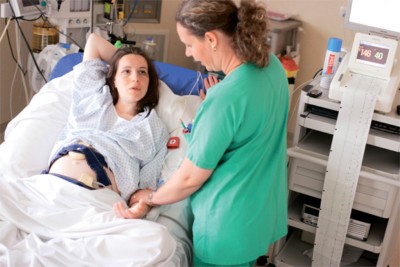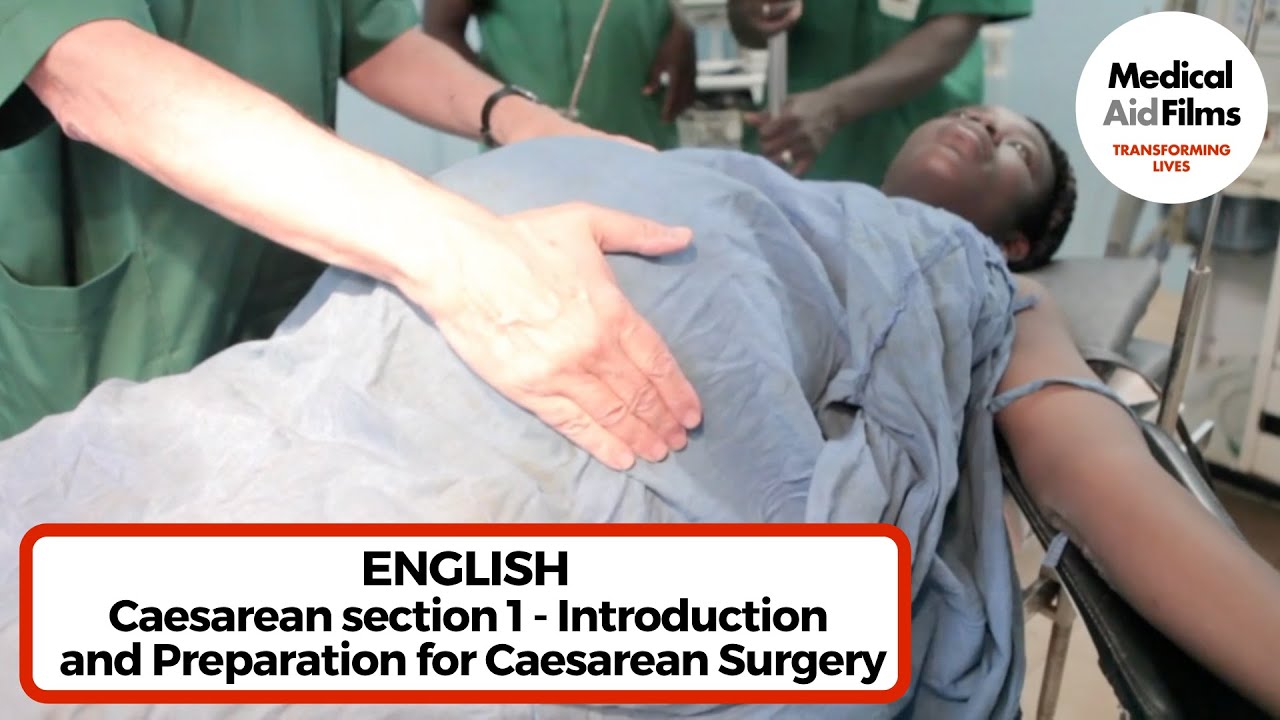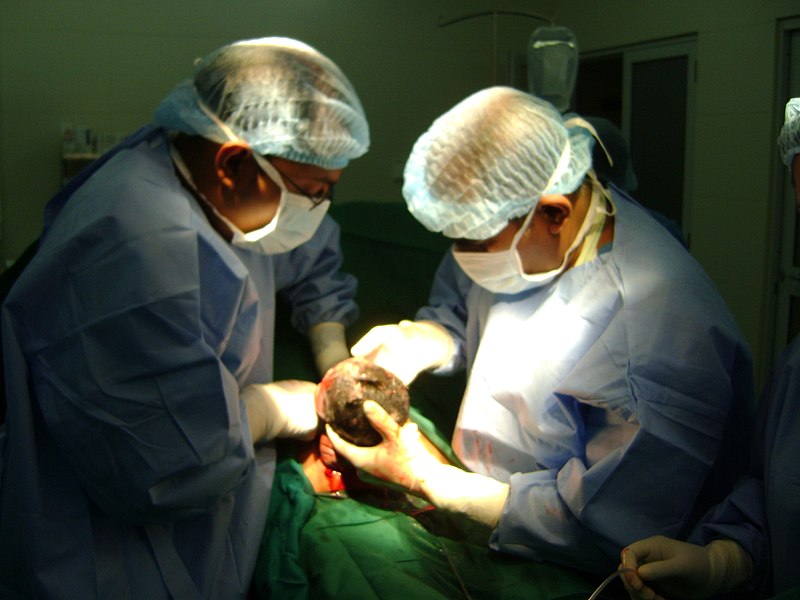Caesarean Section

Contents:
- Risks Related to Caesarean Section
- What Complications Can Occur
- Risks for the Child
- Pregnancy After Caesarean Section
- Recovery After Caesarean Section
- Positive Aspects of Caesarean Section
What You Need to Know About Giving Birth by Cesarean Section
Here comes a question about what is safer: usual vaginal parturition or caesarean section? Vaginal parturition is safer than the option of caesarean section, when pregnancy and beginning of labor go without complications. Also, it is important for this pregnancy and all the following ones as well. Moreover, natural birth will have a better effect on the woman's ability to conceive in the future.
Any surgery involves some risk. And caesarean section is also a surgery performed in pelvic and abdominal area. Sometimes it happens that there are complications after it, and readmission is needed. Although, in cases when it is planned, caesarean section is a safe and common procedure. In some specific cases they do caesarean section to save the mother or the child. Caesarean section is the only (and the safest) way out in such situations.
There may be certain situations when the choice is not evident and even unwanted. To make the best decision, sometimes the doctor and the pregnant need to compare all advantages and drawbacks of doing caesarean section. Here the woman's lifestyle and overall well-being play an important role.
But the risk of complications after caesarean section is much higher if:
- the woman suffers from obesity or excessive weight;
- she has already had caesarean section done before;
- the woman has chronic problems with her health, for example, a heart disease.
If delivery does not begin after stimulation, then, possibly, caesarean section is necessary. Labor stimulation increases the possibility of medical intervention. It involves, for example, the use of different tools like forceps and vacuum extractor, which are also not completely safe. The woman and her doctor will have to weigh all risks and compare them with those of caesarean section.
Risks Related to Caesarean Section

After such surgery you will feel pain for some time, and the recovery process will take a little longer than that after the usual vaginal birth. The woman will most likely feel pain after the surgery in the section area and general discomfort in abdominal area for a few weeks, because it takes some time for the organism to recover. You will certainly get some analgesics prescribed, but the surgery will affect your daily routine anyway.
Infections
To prevent the risk of infection, a dose of antibiotics is usually prescribed prior to the operation. However, the majority of women get infections after such operation as caesarean section anyway.
When body temperature rises, any kind of discharge with an unpleasant smell appear, when there is unusual or strong bleeding, you must tell your doctor or obstetrician about it. This is how infection symptoms may come out.
3 main kinds of infection:
- Infection in the section area. Its signs are discharge from the wound redness, pain in the section area which may be increasing, and wound discrepancy. Such complication occurs in one case out of 10, even in spite of the fact that antibiotics were taken before the surgery. The risk is even higher if the woman has diabetes or excessive weight.
- Endometritis, or internal uterine tissues inflammation. If before delivery amniotic fluid was released, or if prior to caesarean section there were several vaginal examinations, the risk is higher.
- Urinary tract infections. Inflammation may occur when a catheter – a thin tube – is used in surgery to empty the woman’s bladder. In this case, urination is followed by a burning sensation and becomes difficult and painful.
Blood Clots
Almost any surgery is related to a high risk of blood clots. And how serious it is depends on where this clot can get into. It can also threaten life especially if the clot in lungs causes blockage – a so-called pulmonary embolism. Its general symptoms are: painful or difficult breath, cough, and swelling of the ankles. You must necessarily consult the doctor if such symptoms appeared after caesarean section.
It is usually recommended to wear support elastic stockings, which may improve legs blood circulation, and prescribe blood thinning medicine for prevention of clots. Apart from that, they recommend to begin getting up and moving after caesarean section as early as possible. It will help lower the risk of blood clots and restore blood circulation.
Adhesions
Appearance of adhesions can make the recovery process after caesarean section more difficult. Adhesions are small layers of scar tissue which bond the abdominal organs together or attach the tissue to abdominal wall.
Approximately half of the women who had caesarean section have adhesions. How the tissues will be stitched depends on the specific surgical actions. The number of caesarean sections the woman has had also plays an important role. The risk of adhesions can increase up to 75 % after the second caesarean section and up to 83 % after the third one.
The risk of adhesions grows up to 75 % because they are capable of restricting mobility of almost all internal organs. Especially, if they press and block all the closely located organs, it leads to the problems related to infertility and ileus.
Side Effects of Anesthesia
Caesarean section is done with the use of local anesthesia. In most of the cases, it is spinal or epidural anesthesia. It is considered safer than general anesthesia. However, any type of anesthesia is related to certain risks.
Also, after the epidural anesthesia, there may be such complications as:
- severe headache. A headache is the most possible if there were several different local anesthetics used during parturition. It occurs in 1% of the cases;
- nerve damage. It very seldom happens. In most of the cases, it goes away after a few days or weeks. Chronic consequences are a very seldom phenomenon.
What Complications Can Occur

There are hardly ever any serious complications.
- in approximately 9 cases out of a thousand a necessity of reanimation occur;
- in 8 cases per 1000 women a necessity of an urgent uterus removal surgery or hysterectomy;
- in 5 cases per thousand there will be a necessity in repeating surgery after a little while;
- a surgery on the tubes which connect kidney and bladder – ureters, on the bladder, or on the intestines. Though, a necessity of such surgery happens rather seldom, in one case out of a thousand.
Blood transfusion may be necessary during caesarean section if a severe blood loss occurs. Some complications associated with carrying out caesarean section may become life threatening. However, they hardly ever occur.
Risks for the Child
During the process of carrying out caesarean section, as well as after it, everything is alright with the child in most of the cases. Some newborns, though, may have troubles with breathing. It is usually not serious. However, sometimes a baby may require special care to get back to the normal state.
Breath difficulties are the most likely if a baby was born prematurely or with the help of caesarean section. Or in a case when caesarean section had been carried out before the labor began, and the term of pregnancy at that moment was less than 39 weeks. A surgeon may hurt the child with a scalpel in approximately one case per 50. But such injuries usually heal up without any consequences.
Pregnancy After Caesarean Section

Without doubt, yes. It may have an impact. In a next pregnancy, the possibility of a repeated caesarean section is quite high if she has already had one before. However, it absolutely does not mean that caesarean section will necessarily take place. A usual vaginal birth is quite probable after caesarean section.
A risk of placenta previa slightly increases, and so does especially the risk of placenta growing into too deeply in a next pregnancy after caesarean section.
A risk that the scar on the uterus will come apart during the next pregnancy, or a uterine rupture will occur during labor, is quite low. It happens rather seldom. In only one case out of 200, in attempts to carry out vaginal birth, especially if the woman has had caesarean section before, a uterine rupture occurs.
Recovery After Caesarean Section
Having heard all the terrifying stories about postpartum depression or about the difficulties associated with breastfeeding after caesarean section, the woman should try to not worry for nothing. An early postpartum depression happens more often with those who had caesarean section compared to those who had a usual parturition. But the chances even out after a couple months.
At the very beginning it is necessary to get help from a consultant or an obstetrician on the issue of breastfeeding if the woman decides to breastfeed her child. Because she will need more help than those who have usual natural parturition. The chances of success become equal if the woman has already begun to breastfeed.
Positive Aspects of Caesarean Section
A woman will know for sure when her child will be born if she has a planned caesarean section. She will not have to endure perineal pain and suffer from spasms, as it usually happens during the natural parturition. Of course, for some time the abdomen and the section area will hurt. Various analgesics will help cope with it. The woman can also feel some certain discomfort associated with vaginal parturition.
With caesarean section, she will not have to deal with such unpleasant feelings as:
- severe postpartum bleeding;
- pain from the stitches and ruptures in the perineum or abdominal muscles pain;
- urinary incontinence – involuntary urination while laughing or coughing.
Caesarean section also lowers the risk of uterine prolapse in the future.
However, there are some other factors which affect the risk of uterine prolapse:
- how many children the woman has given birth to;
- the child’s weight at the moment of birth;
- whether mother or sister of the woman have had uterine prolapse;
- whether the woman suffers from excessive weight;
- how exactly vaginal birth is carried out;
- whether the woman suffers from frequent constipations.
The course of pregnancy itself may cause such problems as involuntary urination and weaken the pelvic floor muscles. That is why it is important for the pelvic floor muscles to do exercises regardless of what kind of parturition is planned.